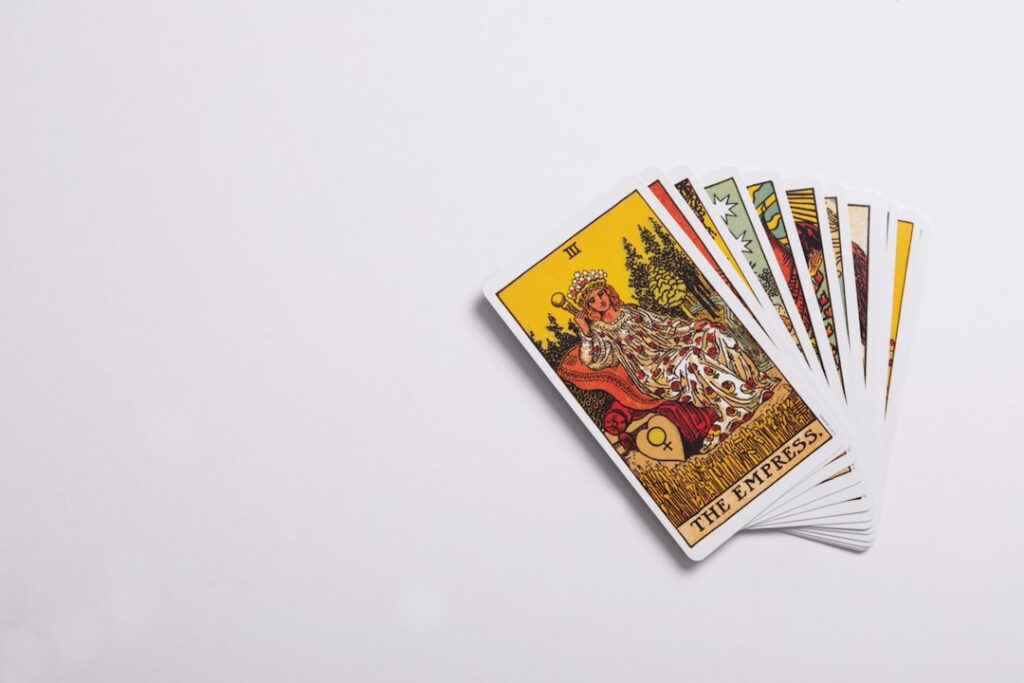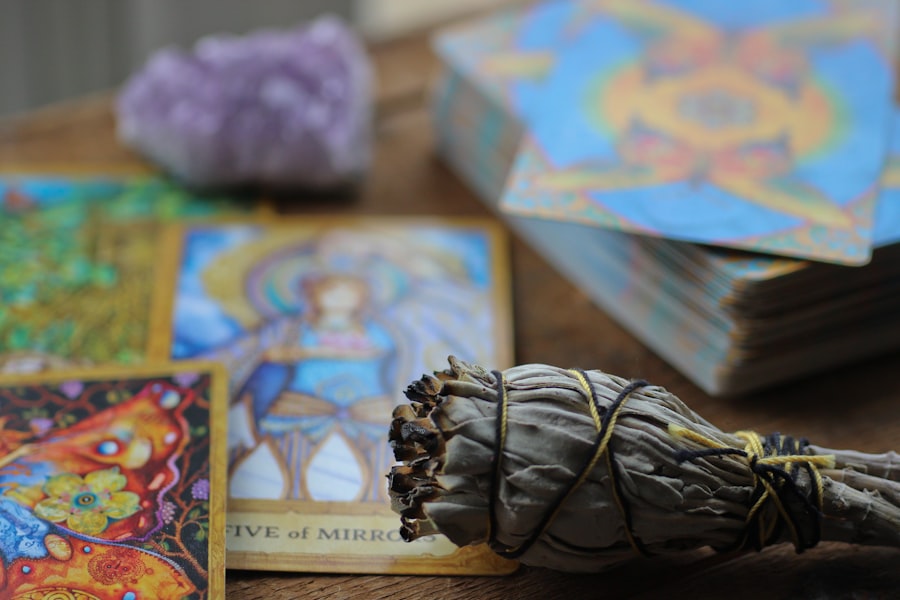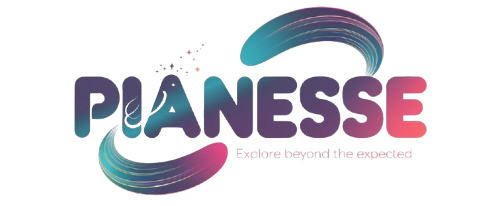Exploring the Mystical Tree of Life with Crowley Thoth Tarot

The Tree of Life is a profound symbol that has transcended cultures and epochs, serving as a representation of the interconnectedness of all existence. Rooted in Kabbalistic tradition, it is often depicted as a diagram consisting of ten interconnected spheres, known as Sephiroth, which represent different attributes of the divine and aspects of human experience. Each Sephirah embodies a unique quality, ranging from the ethereal heights of Keter, the Crown, to the grounded essence of Malkuth, the Kingdom.
This intricate structure not only illustrates the relationship between the divine and the material world but also serves as a map for spiritual development and self-discovery. In addition to its Kabbalistic origins, the Tree of Life has found resonance in various esoteric traditions, including alchemy, astrology, and even modern psychology. Its branches extend into the realms of mysticism and philosophy, inviting seekers to explore the depths of their consciousness and the universe.
The Tree of Life is not merely a static diagram; it is a dynamic framework that encourages individuals to engage with their spiritual journey actively. By understanding its symbolism and structure, one can unlock pathways to greater awareness and insight, making it an invaluable tool for those on a quest for meaning and enlightenment.
Key Takeaways
- The Tree of Life is a mystical symbol that represents the interconnectedness of all life and spiritual growth.
- The Crowley Thoth Tarot Deck is a powerful tool for divination and self-discovery, with rich symbolism and imagery.
- The Major Arcana cards in the Tarot correspond to the paths on the Tree of Life, representing major life themes and spiritual lessons.
- The Minor Arcana cards in the Tarot correspond to the sephiroth on the Tree of Life, representing everyday experiences and challenges.
- Meditating with the Tree of Life and the Tarot can help individuals gain insight, clarity, and spiritual connection.
Understanding the Crowley Thoth Tarot Deck
The Crowley Thoth Tarot Deck, created by the influential occultist Aleister Crowley and illustrated by Lady Frieda Harris, is a rich tapestry of symbolism that draws heavily from various mystical traditions, including Kabbalah, astrology, and alchemy. First published in 1969, this deck is renowned for its vibrant imagery and complex interpretations, which challenge conventional tarot readings. Each card is imbued with layers of meaning that reflect Crowley’s deep understanding of esoteric knowledge and his desire to convey profound truths about the human experience.
At its core, the Thoth Tarot is designed to facilitate a deeper connection with the self and the universe. The deck consists of 78 cards divided into two main categories: the Major Arcana and the Minor Arcana. The Major Arcana comprises 22 cards that represent significant life lessons and archetypal energies, while the Minor Arcana consists of 56 cards that delve into everyday experiences and challenges.
The artwork in the Thoth Tarot is strikingly bold and colorful, often incorporating symbols from various traditions that invite contemplation and introspection. This visual richness serves as a gateway for users to explore their inner landscapes and engage with their spiritual journeys.
The Major Arcana and the Tree of Life

The Major Arcana cards in the Crowley Thoth Tarot are intricately linked to the Tree of Life, with each card corresponding to specific paths between the Sephiroth. These paths represent spiritual journeys and transformative experiences that individuals encounter throughout their lives. For instance, The Fool card, which symbolizes new beginnings and potential, corresponds to the path connecting Keter (the Crown) to Chokmah (Wisdom).
This connection emphasizes the idea that every journey begins with a leap of faith, encouraging individuals to embrace uncertainty as they embark on their personal quests. Another significant card is The Tower, which represents upheaval and revelation. This card corresponds to the path between Geburah (Severity) and Tiphareth (Beauty), illustrating how moments of chaos can lead to profound insights and personal growth.
The Tower serves as a reminder that destruction can pave the way for renewal, urging individuals to confront their fears and embrace change as an essential part of their evolution. By studying these connections between the Major Arcana and the Tree of Life, practitioners can gain deeper insights into their own life experiences and understand how they fit into the larger tapestry of existence.
The Minor Arcana and the Tree of Life
| Minor Arcana Suit | Tree of Life Sephirah | Meaning |
|---|---|---|
| Wands | Kether | Will, creation, beginnings |
| Cups | Binah | Emotions, love, relationships |
| Swords | Chesed | Intellect, truth, justice |
| Pentacles | Malkuth | Material world, wealth, practicality |
While the Major Arcana delves into significant life themes, the Minor Arcana provides insight into daily experiences and challenges. The Minor Arcana is divided into four suits: Wands, Cups, Swords, and Disks (or Pentacles), each representing different aspects of life. These suits correspond to various elements—Fire for Wands, Water for Cups, Air for Swords, and Earth for Disks—creating a rich interplay between elemental forces and human experiences.
Each card within these suits can also be mapped onto the Tree of Life, revealing how everyday situations relate to broader spiritual themes. For example, a card from the suit of Cups may reflect emotional experiences tied to relationships or intuition, while a card from Wands may signify creativity or ambition. By examining how these cards connect to specific Sephiroth on the Tree of Life, practitioners can uncover deeper meanings behind their daily challenges.
This exploration allows individuals to see their struggles not merely as obstacles but as opportunities for growth and transformation within their spiritual journey.
Exploring the Paths of the Tree of Life
The paths connecting the Sephiroth on the Tree of Life are rich with symbolism and meaning. Each path represents a unique journey that reflects different aspects of human experience and spiritual development. For instance, the path from Chokmah (Wisdom) to Binah (Understanding) emphasizes the importance of integrating knowledge with comprehension.
This journey encourages individuals to not only seek wisdom but also to cultivate discernment in applying that wisdom in their lives. Another significant path is that between Tiphareth (Beauty) and Netzach (Victory), which highlights the relationship between inner harmony and external success. This connection suggests that true victory arises from a place of balance and self-acceptance.
By exploring these paths through meditation or tarot readings, individuals can gain insights into their own life journeys, recognizing how their experiences align with these archetypal themes. Engaging with these paths fosters a deeper understanding of oneself and encourages personal growth through reflection on one’s choices and actions.
Meditating with the Tree of Life and the Tarot

Meditation is a powerful tool for connecting with both the Tree of Life and the Crowley Thoth Tarot. By incorporating these elements into meditation practices, individuals can deepen their understanding of themselves and their spiritual paths. One effective method involves selecting a card from either the Major or Minor Arcana and contemplating its symbolism in relation to a specific Sephirah on the Tree of Life.
For example, if one draws The Empress card from the Major Arcana while focusing on Netzach (Victory), they might meditate on themes of abundance, creativity, and nurturing within their personal victories. This connection can illuminate how one’s creative endeavors contribute to overall success in life.
Alternatively, meditating on a Minor Arcana card like the Eight of Swords while focusing on Yesod (Foundation) may reveal insights about self-imposed limitations and how they affect one’s sense of stability. Such meditative practices foster a deeper connection between tarot symbolism and personal experience.
Using the Tree of Life for Personal Growth and Transformation
The Tree of Life serves as an invaluable framework for personal growth and transformation. By understanding its structure and symbolism, individuals can identify areas in their lives that require attention or healing. For instance, if someone feels disconnected from their purpose or lacks direction, they might explore pathways leading from Keter (Crown) to Tiphareth (Beauty), seeking clarity about their true calling.
Moreover, engaging with specific Sephiroth can facilitate targeted personal development. For example, focusing on Hod (Glory) may encourage individuals to enhance their communication skills or intellectual pursuits, while exploring Geburah (Severity) can help them confront fears or establish healthy boundaries. By actively working with these energies through practices such as journaling or visualization exercises, individuals can cultivate greater self-awareness and foster meaningful change in their lives.
Embracing the Mystical Journey with the Crowley Thoth Tarot
The interplay between the Crowley Thoth Tarot and the Tree of Life offers a rich tapestry for exploration within one’s spiritual journey. By delving into both systems—understanding how they interconnect—individuals can unlock profound insights about themselves and their place in the universe. The tarot serves as a mirror reflecting inner truths while the Tree of Life provides a map guiding seekers through their transformative experiences.
As practitioners engage with these symbols through meditation, reflection, or tarot readings, they embark on a mystical journey that transcends mere divination. This journey invites them to embrace their complexities, confront challenges head-on, and ultimately discover deeper layers of meaning within themselves. In this way, both the Crowley Thoth Tarot and the Tree of Life become powerful allies in navigating life’s mysteries—encouraging growth, transformation, and an ever-deepening connection to both self and spirit.
FAQs
What is the Crowley Thoth Tree of Life card?
The Crowley Thoth Tree of Life card is a part of the Thoth Tarot deck, which was created by Aleister Crowley and Lady Frieda Harris. The deck is known for its esoteric symbolism and is used for divination and spiritual guidance.
What does the Tree of Life card represent?
The Tree of Life card in the Thoth Tarot deck represents the Kabbalistic Tree of Life, which is a symbol of the mystical aspects of Judaism. It is a complex and multi-layered symbol that represents the interconnectedness of the universe and the spiritual journey of the individual.
How is the Tree of Life card used in tarot readings?
In tarot readings, the Tree of Life card can represent spiritual growth, enlightenment, and the interconnectedness of all things. It can also symbolize the balance between the physical and spiritual realms, and the journey towards self-discovery and self-realization.
What are some common interpretations of the Tree of Life card?
Some common interpretations of the Tree of Life card in the Thoth Tarot deck include balance, harmony, spiritual awakening, and the integration of the conscious and unconscious mind. It can also represent the cyclical nature of life and the interconnectedness of all living beings.
Are there any specific rituals or practices associated with the Tree of Life card?
While there are no specific rituals or practices associated with the Tree of Life card itself, some practitioners of the Thoth Tarot deck may incorporate Kabbalistic teachings and meditative practices into their readings to deepen their understanding of the card’s symbolism.







